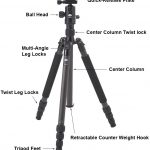E-bikes are great for commuting and transportation, but they come in different sizes, shapes, speeds, and power outputs. Choosing the right one for your needs can be a challenge. This article will explore how to select an e-bike based on factors like terrain and battery size. If you’re ready to figure matters out and decide, let’s dive in!
500W Ebikes
A 500W e-bike is one of the market’s most popular types of electric bikes. It’s designed to be more affordable than a 1000W or 750W e-bike, but it still has enough power to let you ride confidently and comfortably. If you’re looking for a bike that will get you around town with ease while still being affordable, then this is the perfect option.
The 500W e-bike is a step up from an entry-level model and has enough power to help you effortlessly conquer hills. A 500W motor also makes it possible to go faster than you would on an entry-level bike. If you’re also looking for a bike that will help get you from point A to point B but don’t want something too expensive or complicated, then a 500W e-bike is worth considering.
What makes 500W bikes popular? They combine affordability and functionality. You can use them as an everyday commuter or for recreation on trails and paths around your neighborhood. They’re great if you want to save money by not having to purchase a car.
750W Ebikes
An electric bike 750W is one with a motor that delivers 750 watts of power. This high-performance electric bike can be used for commuting, grocery shopping, and other daily errands.
It has all the features of a regular bicycle, including pedal assist and regenerative braking. It also comes with a battery pack that can be charged by connecting it to an outlet or plugging it into your car’s cigarette lighter.
A 750W e-bike is a high-performance electric bicycle used for commuting, traveling, and fitness.
The bike is powered by a 750W electric motor, which means it can reach speeds of up to 20mph without pedaling. It also has a battery that can last up to 40 miles on a single charge depending on the terrain.
If you’re looking for an electric bike that offers more power than the average 250W model and allows you to get where you need to go faster, this might be the right choice.
1000W E-bikes
A 1000W e-bike is more powerful than a 750W e-bike and can reach speeds of up to 30 mph, depending on the terrain. They have larger batteries and motors, so they’re heavier but can climb steeper hills. It’s ideal if you want to get from point A to point B quickly or if you plan on doing some serious off-roading.
The 1000W e-bike offers more than double the power of most other e-bikes, so it’s perfect for people who like to ride fast and hard. If you want to climb mountains and explore new places but don’t want to spend all day doing it, a 1000W e-bike is the best option.
It’s important to note that 1000W e-bikes are typically heavier than other bikes because of their larger motors and batteries. However, this doesn’t mean that they aren’t suitable for beginners—they just require more energy output from riders to maintain speed and momentum as they climb steep grades or tackle rough terrain
Which is the best?
You need to consider your needs when choosing between the 500W, 750W, and 1000W e-bikes.
If you live in a hilly area, a 1000W e-bike will be able to handle the hills better than a 750W one. A 750W or 1000W e-bike is best for you if you want to go fast. If you don’t have much money and can only afford a 500W e-bike, then it’s still fine—just know that it won’t go as fast as the other options and won’t be as good on hills.
You should also consider what type of terrain you’ll be riding on: if there are lots of dirt roads and trails with bumps in them (like off-road trails), then having more power will help you get over them faster and easier. However, if there are only smooth roads and sidewalks where you live, then having less power is better because it will help save battery life.
Consider the terrain
As you can see, W-rating is an essential factor to consider. But there are other factors as well. For example, if you ride on flat terrains, such as a bike path or road, it might be better to choose a lower W-rating (500W). This is because more power won’t be necessary on these surfaces; you’ll have less risk of losing control if your motor doesn’t have too much extra power.
On the other hand, if you commute in hilly areas and mountains or just in hilly areas rather than all flatlands, then choosing a higher W-rated e-bike will help you keep up with those long ascents and descents.
Consider user weight and rider height
The heavier the rider and cargo, the more power you need. The taller your cargo, the more power you need as well. Similarly, it makes sense to get a larger motor if you’re carrying a heavier battery or multiple batteries with your e-bike. And obviously, if you have a higher-capacity battery on board, this will also take up space in your frame and require additional mounting hardware.
Consider cargo
If you plan to carry cargo, think about the weight and size of what you will be hauling. A heavier load makes it harder for the motor and battery to accelerate on hills and can also increase wear and tear on your bike. Consider how much cargo you will be carrying (and with how many people), how far you’ll be riding in a single trip, and whether or not this bike can handle such loads safely.
If you plan to carry passengers or animals on your e-bike, ensure the bike is built with those needs in mind. Do they have room to navigate around each other while riding? Are there enough hand grips so everyone feels safe? How strong are the racks attached to this particular model of e-bike? These are all questions worth asking before purchasing an electric roadster.
Consider battery size
When considering the best battery size for your bike, you should consider a few things. The first is that bigger batteries can take you further and longer than smaller ones. If you plan on going long distances or riding in hilly terrain, having extra range will help keep you from getting tired.
The second thing to think about is whether or not you want to be able to put out more power as well. A larger battery will allow for more torque and speed when climbing hills—however, this may also mean that it weighs more than a smaller one with less capacity.
Consider gearing
Gearing is essential for hills. Not every eBike has a motor that can provide enough torque to conquer steep inclines, so you may find yourself constantly shifting down gears on steep grades. This can be tiresome, especially if you’re riding in a city with many hills and stoplights.
Gearing is also vital for speed. If your gearing is too low and your bike too heavy, it will be challenging to get up to speed when you first start pedaling—and hard to maintain an adequate cruising speed once you’ve gotten up to speed (unless you are exceptionally fit).
Gearing is necessary for range or battery life if the motor runs continuously at full throttle (which most people do not do). You might save money by purchasing an e-bike with lower-quality batteries but then find out later that its range is limited because its motor runs much faster than necessary when set at high levels of power output. This wastes energy quickly over long distances!
Also, consider gear ratios carefully before making any purchases: make sure there’s enough room between each gear ratio so that shifting doesn’t feel awkward or cumbersome when taking corners or climbing hills (or doing anything else). It’s best if at least five different speeds are available between each shift point; more than seven gears might seem excessive but actually helps reduce knee strain while pedaling uphill
There are other factors to consider
The W-rating of an e-bike is usually correlated with its speed, but there are other factors to consider when choosing one. For example, if you have a long commute and don’t want to pedal, you may wish for the highest power motor available. On the other hand, if you’re looking for an e-bike mainly for riding around town and occasionally going on longer trips (or just want to reserve your legs), then a lower-powered motor will do just fine.
The W-rating is not the only factor that should influence your decision about which e-bike is right for you: it should also consider how much money you have available for purchase (and maintenance). And this isn’t even mentioning ride quality. All else being equal, between two different brands or models from two other companies – one offering lower wattage motors vs. another offering higher wattage ones – any reasonable person would pick based on their budget before anything else.
Conclusion
In summary, the W-rating of an e-bike is not a perfect predictor of speed or range. It depends on many factors: your terrain, weight, and height, how heavily you’re carrying cargo, and what kind of gear you have. Also, remember that motor wattage is not always directly correlated with power output (it can be lower or higher than expected).











